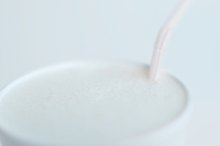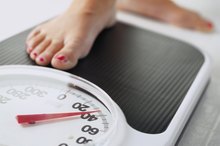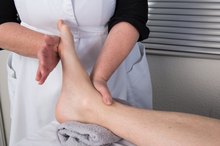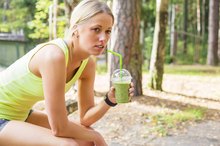What does fact checked mean?
At Healthfully, we strive to deliver objective content that is accurate and up-to-date. Our team periodically reviews articles in order to ensure content quality. The sources cited below consist of evidence from peer-reviewed journals, prominent medical organizations, academic associations, and government data.
The information contained on this site is for informational purposes only, and should not be used as a substitute for the advice of a professional health care provider. Please check with the appropriate physician regarding health questions and concerns. Although we strive to deliver accurate and up-to-date information, no guarantee to that effect is made.
An Eating Plan for a Treadmill
If you are planning to use the treadmill to lose weight, you’ll need to also follow a calorie-controlled diet. You will also want to choose nutrient-rich foods for energy to optimize your running workouts. Before making changes to your diet and exercise routine, consult your doctor. He may suggest you also add two to three days of strength training routines to your treadmill regimen to build lean muscle.
Breakfast
In the morning, you should always have breakfast. If you plan to use the treadmill in the morning, you should plan to eat at least one to two hours before your workout. If you don’t eat at all, you’ll feel tired and not be able to increase the intensity of your workout. Eat a light breakfast such as whole grain cereal with skim milk, small bagel with peanut butter, banana, fruit cup or glass of juice.
- In the morning, you should always have breakfast.
- If you plan to use the treadmill in the morning, you should plan to eat at least one to two hours before your workout.
Time Frame
Protein Shakes Before or After a Workout for Weight Loss?
Learn More
If you happen to workout later in the day, you should still plan to eat before running on the treadmill. Snacks can be consumed up until an hour before exercise. Allow two to three hours for digestion if you are eating a small meal. You need at least three to four hours before exercising for large meals 2. If you eat too much food before you exercise, you’ll feel sluggish and you may experience stomach upset symptoms, such as cramping and diarrhea.
- If you happen to workout later in the day, you should still plan to eat before running on the treadmill.
Recovery Meal
Within two hours after using the treadmill, plan to have a recovery meal. Choose a recovery meal that contains a mix of proteins and carbohydrates. This will aid in muscle repair and the recovery of glycogen stores. Sample meals include trail mix with fruit and nuts, peanut butter sandwich, turkey sandwich, cheese with whole grain crackers and fruit flavored yogurt.
- Within two hours after using the treadmill, plan to have a recovery meal.
- Choose a recovery meal that contains a mix of proteins and carbohydrates.
Dinner
Foods Prediabetics Should Eat & Avoid
Learn More
For dinner, runners can benefits from a meal consisting of lean protein and vegetables 2. The protein source should be high in iron since not getting enough iron in your diet can cause you to feel fatigued while running on the treadmill. If you eat meat, choose lean cuts of beef for dinner. Vegetarian options include spinach, legumes, kale, broccoli and fortified cereals.
- For dinner, runners can benefits from a meal consisting of lean protein and vegetables 2.
- The protein source should be high in iron since not getting enough iron in your diet can cause you to feel fatigued while running on the treadmill.
Related Articles
References
Writer Bio
Heather Topham Wood is a seasoned writer whose work has appeared in numerous publications, including USA Today, Gadgetell, Feel Rich and Step in Style. Heather is a published novelist with six Amazon bestsellers and a contract through Crescent Moon Press. She holds a bachelor's degree in English from TCNJ.








